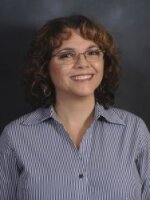A public Cemetery Workshop is getting underway in Pensacola. The event is significant part of the “By These Hands” grant project involving the city’s historic African American cemeteries.
The workshop will take place over the next several days. It features a comprehensive series of professional presentations and training in the area of cemetery conservation and documentation.
University of West FloridaArchaeologist Margo Stringfield is coordinating UWF’s involvement in the Florida Humanities Council grant project and was instrumental in lining up the workshop’s many expert speakers.
“Jason Church is coming and he’s a conservator with National Park Service Technologies, said Stringfield. “Sharyn Thompson from the Centers for Historic Cemeteries studies and she will come in and look at our regional cemetery resources.”
And, opening the event with a presentation this Thursday, September 17, is Dr. Dennis Montagna, an architectural historian and director of Monument Research and Preservation for the Park Service’s Northeast Office.
His talk will be held at the West Florida Public Library Main branch. It’s titled “The African Burial Ground National Monument: A Forgotten History Comes to Light.”
“Historically, it goes back to when the federal government wanted to construct an office tower in Lower Manhattan, adjacent to another tower/building that they occupied,” Montagna said.
The monument honors the long-forgotten burial ground that encompasses more than six acres and has an estimated 15,000 men, women, and children, who buried there between the late 1600’s and the mid-1790s.
It’s the nation’s earliest and largest known African and African American cemetery. And, surprisingly it’s right in the heart of New York City-protected by 25-30 feet of fill.
“They hadn’t anticipated finding any remains because lower Manhattan had developed pretty extensively in the 19the century,” said Montagna. “But they did find in-tact burials. So, the work was ceased in 1991 and a process began whereby a full archaeological investigation was done.”
Howard University took the lead on the project, conducting a decade-long study of the remains of 419 people and the many artifacts buried with them. The investigation yielded a wealth of information about the nature of slavery in the city.

From the remains, they leaned about what kind of work people did and the kinds of stresses that their bodies endured. They learned a lot about infant mortality, in that 40% of the remains found are children.
Additionally, they were able to understand about the food the people ate and the health pattern of people born in Africa verses those born here in the U.S. or in the islands.
“Through this kind of extensive archaeological excavation, we’re able to really put a face on slavery at that particular time in the north and come to understand it a lot better than we had before,” Montagna said, adding that an important aspect was bringing the information to the public.
“Very few people, especially in the north, realized that slavery had been a feature of the north as well as the south and it officially opened up a whole range of scholarly interest in the nature of slavery in New York.”
Although the New York project is very different in scale and scope than the cemetery work that’s happening here in Pensacola, Montagna says there are common denominators and he applauds the effort.
Montagna’s talk is set for this evening at 6:30 at the main branch of West Florida Public Library.
On Friday, Sarah Miller and Florida Public Archaeology Network staff will conduct a marker cleaning workshop at 9:00am at Magnolia Cemetery on “A” and Brainerd Street.
UWF archivists Dean DeBolt and Jacquelyn Wilson will present a discussion of the Colored Citizen Newspaper, published between 1914 -1956. It will be held at the Voices of Pensacola Multicultural Center beginning at 11:30.
And in the afternoon, historic masonry specialists will make a presentation at historic Montgomery-John the Baptist Cemetery.
It was John the Baptist Church, the oldest African American Church in Pensacola that secured the “By These Hands” grant.
An exhibit titled Photographing the Vernacular: Art in the Cemetery is on display at Artel Gallery in downtown Pensacola and will be featured during this month’s Gallery Night.
On Saturday, the church will open early for a full day of presentations, including an 11:00 a.m. Round Table and Audience Discussion with Dennis Montagna, Margo Stringfield, Jason Church, Sharyn Thompson, Georgia Smith, Ora Wills, and Ryan Harke.
The event will culminate Saturday afternoon around 1:00 p.m. with tours and the unveiling of an interpretative kiosk at the historic Montgomery-John the Baptist Cemetery located at 8th Avenue & Cross Street.
A full workshop agenda is available on the FPAN website.






